Qigong and Tai Chi: A beginner’s guide to putting the pieces together
Qigong
Every class at Rising Moon Tai Chi begins with gentle, grounding exercises designed to promote relaxed breathing, calm the mind, and help us leave behind the stresses of daily life. This is your time - a chance to unwind, reconnect, and recharge.
These foundation exercises fall under the umbrella of Qigong, which means ‘energy work’. After a gentle warm-up, we begin each class with a selection of Qigong practices such as Standing Meditation, Shibashi, Baduanjin, and Dao Yin.
Standing Meditation helps to centre the breath and sink energy into the lower dantian, creating a strong energetic foundation. From there, we may explore individual Qigong movements designed to open the meridians and promote the free flow of energy throughout the body. Examples include Rooster Crowing in the Morning, Wise Owl Turns Its Head, and Separating Heaven and Earth.
Also under the Qigong umbrella is Shibashi, which means "18" in Chinese. Shibashi is a flowing set of 18 movements, always performed in the same order. Each movement is repeated several times, gently promoting relaxation, balance, and energy flow. At RMTC, we regularly practice both Shibashi Set 1 and Shibashi Set 2.
Dao Yin (or Daoyin) is another form of Qigong. At RMTC, we practice Dao Yin for General Health, a set of eight movements designed to improve physical vitality and mental clarity and Dao Yin Yang Shen Gong Shi Er Fa, a set of 12 exercises for general health.
Baduanjin, meaning "Eight Pieces of Brocade," is another Qigong form we practice. While slightly more complex than other sets, its flowing movements are deeply rewarding and accessible to most students.
Two more favourites among our students are The Lotus and The Flowing River — calming and energising Qigong exercises that are always a joy to practice.
Tai Chi
In Tai Chi, a single movement is called a posture, such as Part Wild Horse’s Mane or Brush Knee. These postures are connected through transitions, and together, they form what we call a Form. A Tai Chi Form is like a flowing dance or a piece of music — it has rhythm, structure, and meaning. Every transition and posture links seamlessly to the next, creating a graceful, continuous sequence.
Once you’ve learned a posture, you’ll recognise it in many different Forms. While the transitions or footwork may vary slightly depending on the style or sequence, the core posture remains the same. For example, Part Wild Horse’s Mane and Brush Knee retain their essence across Forms.
At the beginning of your RMTC journey, the focus is on Yang Style short Forms, which introduce key Tai Chi principles in symmetrical, easy-to-learn sequences. These short Forms provide a solid foundation and prepare students for the more advanced Beijing 24 Form.
By practicing short Forms first, students develop a deeper understanding of movement, balance, and technique, gradually building the mental and physical awareness needed for longer and more complex Forms like Beijing 24. The unique quality of learning Tai Chi is that there is no hurry forward. Students progress at their own rate, enjoying the challenges and joy of learning something new.
Yang Short Forms for Beginners are:
8 Form
5 Form
10 Form
RMTC Short Form Part 1
Below is an explanation of the Tai Chi Forms Beginner student will learn.
8 Form - the first tai chi form we learn at RMTC
This short form is in 2 parts. It introduces the principles of silk reeling, and in Part One we learn the postures of Part Wild Horse’s Mane, Golden Rooster Stands on One Leg and Repulse Monkey. Part 2 introduces Brush Knee, Cloud Hands and Roll Back. These postures also appear in 10 Form and Beijing 24.
5 Form - the second tai chi form for beginners
After the Silk Reeling 8 Form is familiar, we can practice the 5 Form. This short form has no new postures, but the order and repetitions are different, making it more challenging for the brain!
10 form - the third form beginners learn at RMTC
All of the postures from the 8 Form appear in the 10 Form. New postures we learn are High Kick with Heel and Grasp Bird’s Tail (also known as Stroke Peacock’s Tail). These three postures also appear in Beijing 24. The major difference in the 10 Form is direction. Here we learn how to turn 90 degrees and 180 degrees.
Short Form part 1 - the fourth ‘beginner’ form
The RMTC Form is a symmetrical form but one that changes directions from North to South It includes postures from Silk Reeling 8 Form and 10 Form, including Brush Knee, part Wild Horse’s Mane, Grasp Bird’s Tail and High Kick with Heel. It introduces Single Whip and Jade Ladies, which are found in the Beijing 24.
Beijing 24, the next progression
As their skills and understanding develop, Beginner students are encouraged to progress to Intermediate classes. To support this transition, we offer specialised ‘Entry Level’ Beijing 24 classes, designed specifically for those moving from the Beginner to Intermediate level.
Learning Tai Chi is a journey of unfolding layers - a blend of understanding and confusion, of acceptance and joy. By taking it step by step, students at RMTC build a strong foundation and experience a sense of achievement in every class. The steady, encouraging progress prepares them to meet the challenges of this beautifully intricate art form with confidence and curiosity.

